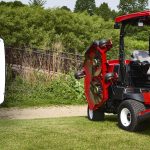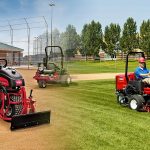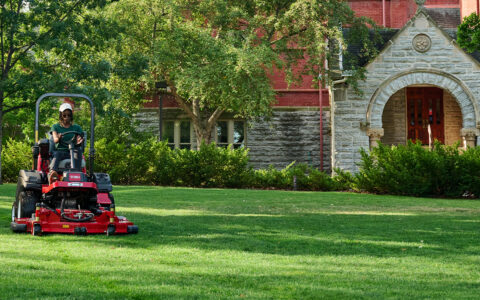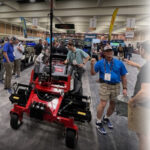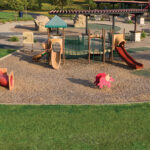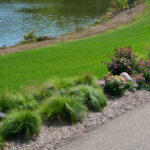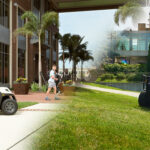Sports Field Irrigation: Which Option Is Right for You?
No two sports fields are the same. With a growing number of choices in natural and synthetic turfs, regional differences in weather conditions and varying levels of usage, there are few default answers when it comes to the best irrigation products and practices to maintain the best aesthetics and surface for your field’s requirements. On top of all of that, outside of professional sports teams, it can be difficult to implement every process and piece of equipment originally foreseen for your field. However, there are a number of irrigation options suited for sports fields that provide a level of flexibility and utility to meet the needs of any field — and most any budget. Here are a few of those options and their key advantages.
Long Radius Sprinklers
Given the lengths and widths that most sport fields span — think American football, soccer, rugby and polo — long radius sprinklers can help get more water to the turf in shorter amounts of time. At their peak, sprinklers like Toro’s TS170 Series Sprinkler are capable of reaching a throw distance of 177 feet (54 m) and putting out upwards of 300 gallons (1,136 L) per minute. With a radius capability of 177 feet (54 m), only one sprinkler head is required to stretch the entire width of a standard synthetic turf football field, making for a total of six heads to cover the entire field. Further, given their radius capabilities, those six heads can be installed along the perimeter of the field, outside of the turf area. Time required for maintenance is reduced with the elimination of having to dig around the head for servicing; installation costs are lessened given available Valve-In-Head (VIH) configurations; and there are fewer points of potential failure given the smaller number of sprinklers installed compared to a more traditional sprinkler layout.

Smaller Area Irrigation
Smaller areas, such as baseball infields or grass tennis courts, are best serviced by mid-range rotors that throw between 30-65 feet (9.1-19.8 m). Rotors are well-established products that are fairly straightforward to install and service, yet as a product category provide a wide range of flexibility in design given their nozzle options, their range of capabilities, and lots of choice in models and manufacturers. The ideal choice for your field comes down to water supply, head spacing and water windows. The Toro T7 Series Rotor is an example of a rotor that offers a good range of choice in regard to configurations and applications. Available with a plastic or stainless-steel riser, a low flow stator configuration for sites with lower water pressure, and nozzle sizes between 2 and 30 gallons (7.6 and 113.6 L) per minute, there are few sports field design variables that can’t be met.
Given the upstream infrastructure, the typical rotor installation may cost a little more up front than other irrigation choices. However, day-to-day operations are quite cost-effective, as most systems are automated and controlled through advanced control systems. For example, Sentinel Central Control schedules irrigation based on the on-site weather, soil conditions and historic ET data. Moreover, these systems can be remotely monitored and operated. From a systems perspective, there are minimal labor requirements and water usage is optimized.
Traveling Sprinklers
An underground irrigation setup is not ideal, or in some cases possible, for all sports fields. That said, there is still a need to irrigate the turf to help keep it healthy and viable as a useable and desirable surface. Travelling sprinkler systems are semi-autonomous, hydraulically powered units that have seen a growing level of popularity in the last few years. An example of one of these systems is the Toro RollcarT™. The RollcarT is plumbed to a 1″ (2.5 cm) diameter hose and can run with an inlet pressure of 65-75 psi. Very simply, one end of the RollcarT’s tow wire is fixed to one end of the field, and the water-powered winch pulls the cart forward along the wire while simultaneously feeding the impact sprinkler fixed to the top of the cart. Once the cart has reached the end of the wire, it will automatically stop and shut off the flow of water to the sprinkler. The cart is moved laterally down the field, the end of the tow wire is set on the opposite side of the field, and the cycle begins again. A typical football field can be covered in an average of three runs, with each run taking an average of 3-4 hours.

There are a number of irrigation choices where sports fields are concerned, and the above examples are mere glimpses into what is possible. The best choice comes down to the needs of your field, your experience and your personal preferences. In all cases, maintaining healthy turf conditioned to meet the demands of your athletes, visitors and guests is the priority.
For more information about Toro irrigation products, visit Toro.com or contact your local Toro distributor.


